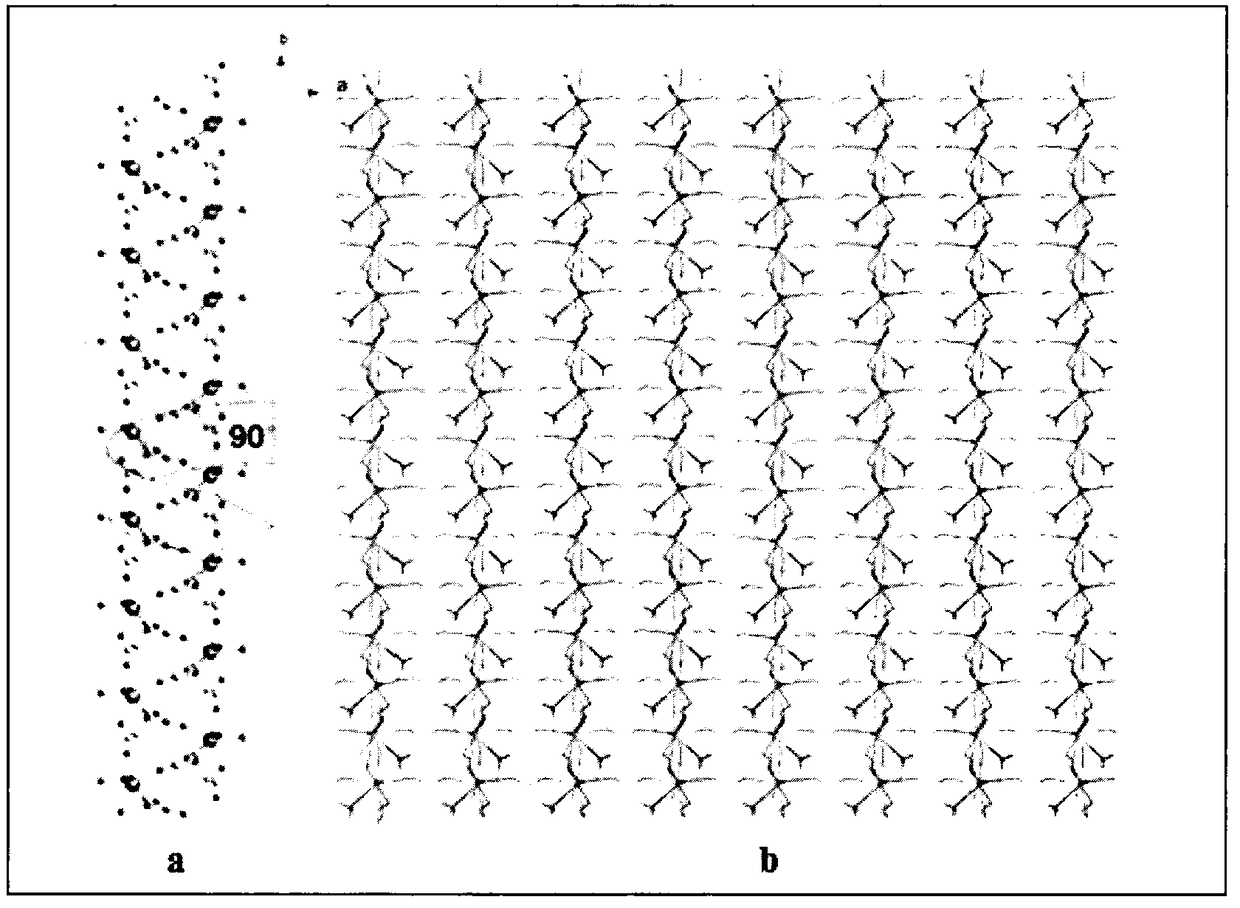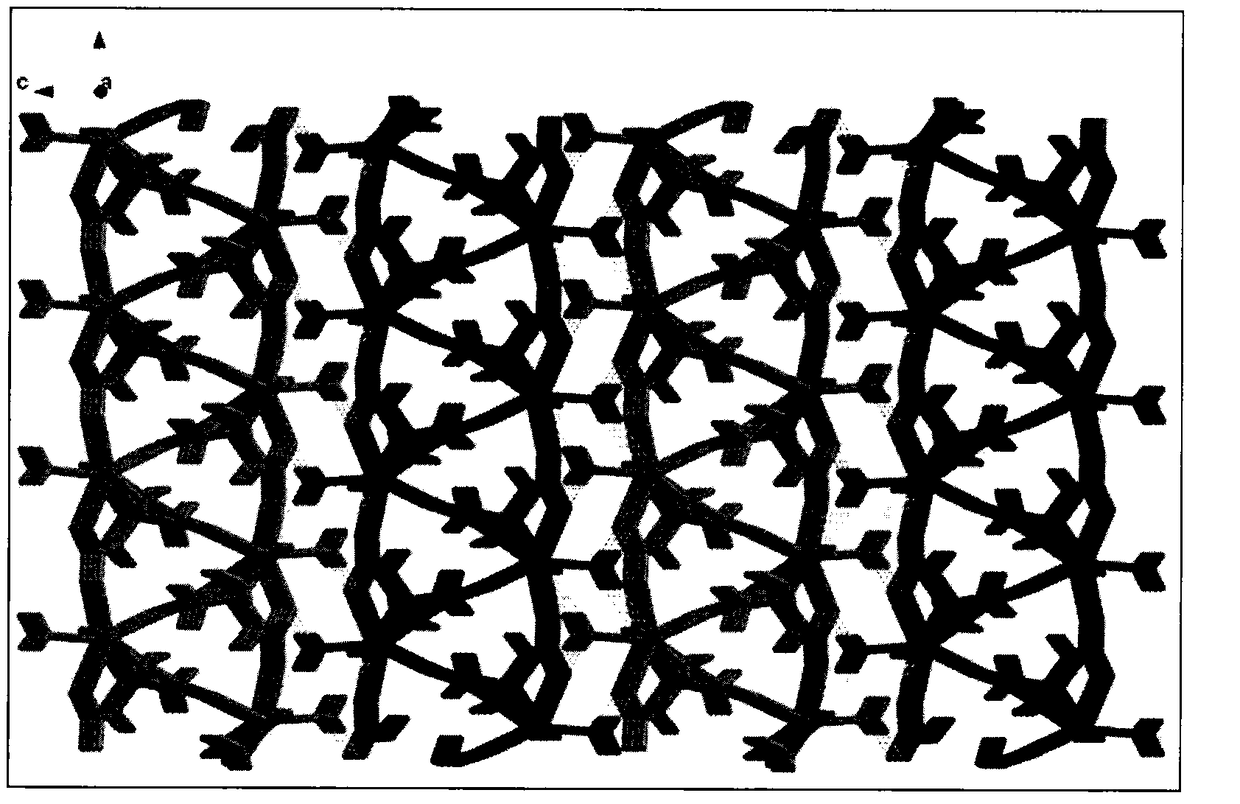Holmium nitrilotriacetate complex used as cadmium ion fluorescent probe and preparation method thereof
A fluorescent probe, nitrilotriacetic acid technology, applied in the preparation of organic compounds, cyanide reaction preparation, fluorescence/phosphorescence, etc., to achieve good selective recognition effect
- Summary
- Abstract
- Description
- Claims
- Application Information
AI Technical Summary
Problems solved by technology
Method used
Image
Examples
Embodiment 1
[0021] The synthesis of embodiment 1 complex:
[0022] 0.2mmol of H 3 NTA and 0.6mmol Ho(NO 3 ) 3 .6H 2 O was dissolved in 10mL of water, the pH of the mixture was adjusted to 5, stirred at room temperature for 30 minutes, transferred to a 25mL polytetrafluoroethylene liner, and put into a reaction kettle, at 160°C The reaction was carried out at room temperature for 96 hours, cooled to room temperature naturally, and the obtained product was washed twice with anhydrous ether (1 mL / time) to obtain pale pink crystals with a yield of 66.1%.
Embodiment 2
[0023] Example 2 Structural characterization of complexes:
[0024] The crystal structure adopts Bruker Smart CCD X-ray single crystal diffractometer at 296(2)K, and the selected size is 0.49×0.41×0.32mm 3 crystals, using graphite monochromatized MoKα rays As the incident radiation source, the diffraction points were collected by ω / 2θ scanning, the unit cell parameters were refined by the least square method, and the collected data were corrected for absorption with the SADABS program. The structure of the complex was solved by the direct method, the coordinates of non-hydrogen atoms and the anisotropy temperature factor were refined by the full-matrix least-squares method, and all calculations were completed by the SHELXTL program. The detailed crystallographic parameters are listed in Table 1. Holmium nitrilotriacetate complex [Ho(NTA)(H 2 O)] n The crystal structure diagram, two-dimensional planar structure and three-dimensional pore structure of figure 1 , figure 2 a...
Embodiment 3
[0028] Example 3 Fluorescent properties of complexes:
[0029] Using the F-7000FL fluorescence spectrometer, the fluorescence properties of the complex were measured at room temperature, and the fluorescence spectrum of the complex in distilled aqueous solution is shown in Figure 4 As shown, the excitation light wavelength is 326nm, and the emission peak is located at 496nm. When Cd 2+ When the concentration of ions added is the same as that of the complex, the same as the complex blank sample (without adding Cd 2+ ions), the position of the emission peak of the complex does not shift (emission wavelength 496nm, excitation wavelength 326nm), but the intensity of the emission peak increases with the Cd 2+ Significantly enhanced by the addition of ions (the fluorescence intensity can be increased by about 5 times); same as the above experiment, adding Cu 2+ , Hg 2+ , Pb 2+ , Ca 2+ and Zn 2+ Compared with the fluorescence intensity of the complex blank sample, the fluores...
PUM
 Login to View More
Login to View More Abstract
Description
Claims
Application Information
 Login to View More
Login to View More - R&D
- Intellectual Property
- Life Sciences
- Materials
- Tech Scout
- Unparalleled Data Quality
- Higher Quality Content
- 60% Fewer Hallucinations
Browse by: Latest US Patents, China's latest patents, Technical Efficacy Thesaurus, Application Domain, Technology Topic, Popular Technical Reports.
© 2025 PatSnap. All rights reserved.Legal|Privacy policy|Modern Slavery Act Transparency Statement|Sitemap|About US| Contact US: help@patsnap.com



